Where and how to keep bell peppers for the winter: fresh, frozen, dried, dried and canned
Bulgarian (sweet) pepper during the ripening season does not pass by any house. Everyone's favorite bright, juicy vegetable is added to hundreds of first and second courses. Salads, soups, sauces, lecho, stuffed peppers, grilled vegetables, stews - all these dishes endow sweet pepper with freshness, aroma and vitamins.
How to keep bell peppers for the winter at home? You will find a detailed answer to this question in our article.
The content of the article
Bell pepper varieties suitable for long-term storage
First, let's figure out which vegetable is suitable for long-term storage. Bell peppers are unique in their composition. In particular, the content of vitamin C in it exceeds the amount of this compound in citrus fruits and black currants.
Also, sweet pepper contains vitamins B1, B2, B6, PP. This vegetable is rich in minerals such as:
- iodine;
- phosphorus;
- potassium;
- sodium;
- magnesium;
- zinc;
- iron;
- calcium.
Attention!Eating bell pepper in food strengthens the immune system and increases the level of hemoglobin, preventing the occurrence of anemia.
Bell peppers are divided into several types:
- early maturing;
- mid-season;
- late ripening.
Which variety is best for long-term storage? Late-ripening varieties are more suitable for long-term storage. They ripen from August to October and are highly resistant to cold and heat.
The following varieties are late-ripening:
- Gladiator;
- Aristotle F1;
- Black Cardinal;
- Bell;
- Gorogled 6;
- Bulgarian Rutund;
- Large yellow;
- Night F1;
- Hottabych F1;
- Ruby;
- Albatross F1;
- Capro F1;
- Paris F1.
Also, bell pepper is divided into thick-walled and thin-walled types of fruits. The thick-walled varieties of this vegetable are juicy and meaty. The fruits of such peppers are significantly superior in weight to thin-walled varieties.
If you are harvesting bell peppers from your garden, you should know a few harvesting secrets for better preservation of the product.

Pepper picking features for better preservation
Interesting! Bell pepper fruits are divided into "male" and "female". If you have a vegetable with three chambers in front of you, it is a "male" fruit, if there are four chambers, it is a "female" one. Peppers with four chambers are considered sweeter; they are used fresh, for salads and decorating dishes. Three-chamber harder, it is suitable for cooking dishes that require heat treatment.
To properly collect sweet peppers, you need to know that they come in two stages of maturity:
- Technical maturity is a slightly unripe vegetable.
- Biological Maturity - Fully ripe vegetable.
It is recommended to cut off fruits for long-term storage precisely in the technical degree of maturity. You should also be careful when cutting a vegetable from a bush: use pruners or scissors so as not to damage the fruit. Have time to remove all the fruits from the bushes before the onset of the first frost. Frozen fruit is not suitable for long storage.
Fresh storage
Keeping sweet peppers fresh is the best solution.Thanks to this storage, they retain their taste and do not lose their beneficial properties.
Features of keeping fresh bell peppers
For fresh storage, it is necessary to harvest the fruits in a technical degree of maturity.
Please note that before storing, be sure to sort out all the peppers cut from the bushes. The surface of the fruit must not be damaged: check that the skin of each fruit is firm, even and free from rot.
The stalk should be green and firm, the tip should be dry, without blackening or rot.
Attention!Bell peppers, when stored fresh, must necessarily be with a stalk.
Influence of humidity, temperature and lighting
An important condition for storage is compliance with humidity and temperature in the room where the workpiece is stored. The temperature regime should not exceed 10-12 ° C. Air humidity - 80-90% provided there is good ventilation and no direct sunlight.
Follow all these indicators very carefully, since at low humidity the fruits wither. If there is poor ventilation in the room, the fruits will rot. Dark spots appear on peppers from low room temperatures.
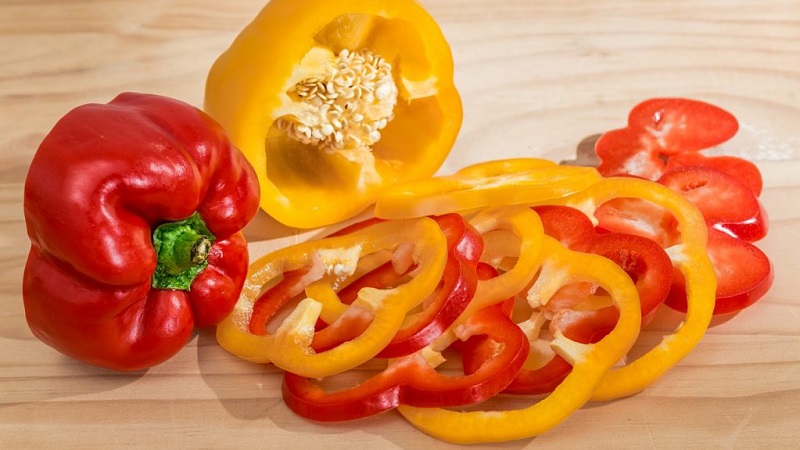
Storing peppers in the refrigerator
Storing peppers in the refrigerator for a shorter period of time, in this way the vegetable lasts only 3-4 weeks.
The product is stored in the refrigerator in the vegetable compartment. For this, the prepared fruits are wiped with a damp towel, but not washed. Place the mashed vegetables in a plastic bag, after making holes in it, tie and place in the refrigerator.
Keeping crops in the refrigerator can lead to condensation problems. In order not to spoil the food during storage, wrap each fruit in paper and fold it into the vegetable storage compartment.
In the cellar and basement
To store fresh paprika in the basement or cellar, you need to prepare wooden boxes. Place dry, clean paper on the bottom of these boxes. Put the fruits of the vegetable in one layer so that they are not in contact with each other, and cover the top with a layer of river sand or sawdust. In a box, do no more than 2-3 layers.
In this state, vegetables harvested at a technical degree of maturity are stored for 4-5 months. If you decide to preserve the product harvested in the botanical degree of maturity in this way, it will be edible up to 2 months.
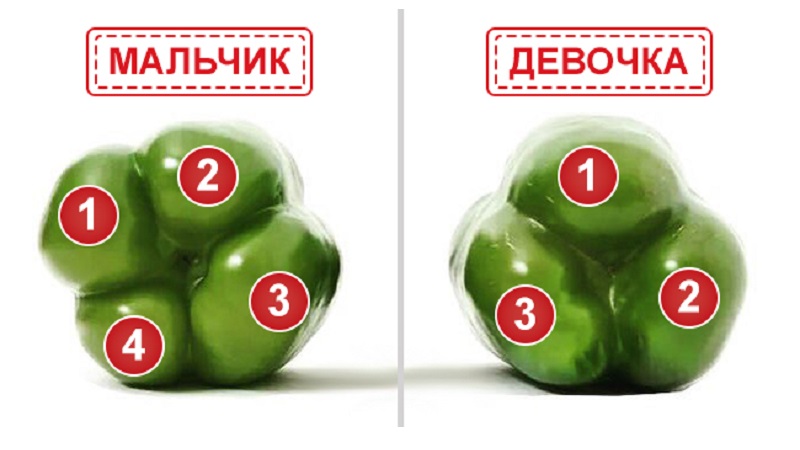
Dried storage
Drying is one of the best ways to keep sweet peppers long-term. With this type of preparation, a minimum amount of vitamins and useful microelements is lost. Dried peppers are stored for up to 12 months, that is, until the next harvest.
Vegetables are dried in several ways: in the fresh air, in an electric dryer and in the oven.
Pepper Drying Rules
When starting the drying process, first select fresh fruits without signs of rotting or other flaws.
Rinse the selected vegetables under running water and dry. Then remove the stem and seeds. Cut them in half, and then chop into strips 3-4 mm.
This completes the preparation process. Next, decide on the drying method.
Outdoors
This method is the simplest and has long been tested by housewives of different generations. All you need to do is spread the prepared peppers on the wire rack, cover them with gauze and leave them to dry in a warm place. Do not leave the workpiece in direct sunlight to prevent it from burning.
Peppers will dry in such conditions within 3-4 days. After that, pour the drying into a dry container and send it to the cabinet for long-term storage.
In an electric dryer
An electric dryer makes the process much easier. Place the prepared product on the wire rack, turn on the electric dryer at a temperature of 50 ° C. After 12 hours the drying will be ready. Pour the peppers into a clean, dry container and store.
In the oven
This method is similar to drying peppers in an electric dryer.Spread the prepared product on a baking sheet, set the temperature to 50 ° C and dry, stirring occasionally, for 12-14 hours.
Attention! It is recommended to store dried bell peppers in linen bags or an open plastic bag. Keeping the jar dry, make a hole in the lid for air to enter.
Pickling and preserving
The usual ways of preserving vegetables are pickling and canning. Bell peppers are harvested for the winter using these methods.
Read on for how to prepare delicious snacks and salads for the winter table.
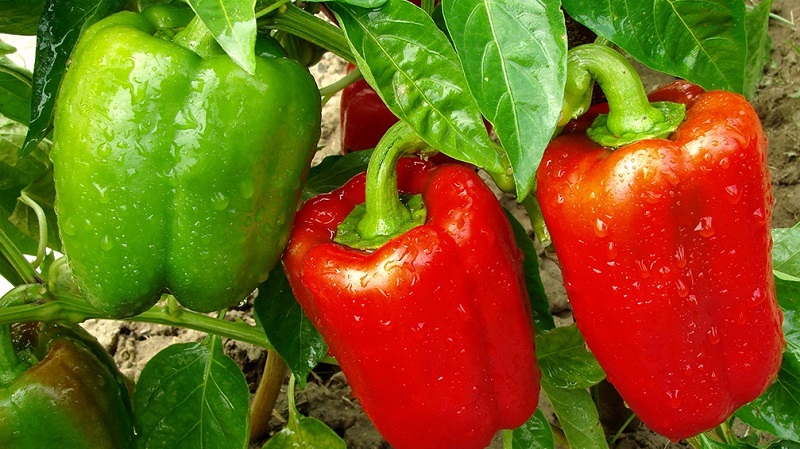
Pickled bell pepper
For pickled bell peppers, choose the thick-walled look.
Ingredients:
- Bulgarian pepper - 3 kg;
- vegetable oil - 1 glass;
- parsley - 1 large bunch;
- sugar - 0.5 cups;
- salt - 2 tbsp. l .;
- garlic - 1 head;
- bay leaf - 8-10 leaves;
- peppercorns - 1 tsp;
- cloves - 6-8 pcs.;
- vinegar 9% - 1 glass;
- water - 600 ml.
Cooking process:
- Rinse the peppers under running water, cut them in half and remove the stem, core and seeds.
- Cut each half into 3-4 pieces depending on the size of the fruit.
- Prepare the marinade. Add salt, sugar, vegetable oil and vinegar to boiling water. Dip the peppers into it and simmer under a closed lid for 10 minutes, stirring occasionally.
- Meanwhile, put the remaining spices in sterilized jars: parsley, garlic, cloves, bay leaf, peppercorns.
- Transfer the boiling billet to the jars and pour the marinade to the top of the jar. Pack vegetables tightly, do not be afraid to crush them.
- Tighten the cans with the blank with tin lids, turn upside down and cover with a blanket or thick towel. Leave in this form until it cools completely.
The pickled bell pepper is ready. Store it in a cool place. After 2-3 months, when the workpiece is completely marinated, serve it on the table. Such an appetizer will serve as an addition to both the festive and everyday table.
Roasted bell pepper
As intimidating as the name of the recipe sounds, don't be intimidated. The recipe is easy to prepare and extremely tasty.
Ingredients:
- bell pepper (not large) - 2.5 kg;
- sugar - 1 glass;
- salt - 1 tbsp. l. with a slide;
- garlic - 1 head;
- pepper bitter - 1 PC.;
- vinegar 9% - 0.3 cups;
- vegetable oil for frying.
The indicated number of products is calculated for one three-liter can.
Cooking process:
- Rinse the fruit under running water. You do not need to clean them. Fry the whole fruit, along with the stalk and heart, in vegetable oil.
- Put the fried vegetable in sterilized jars in layers: a layer of pepper, a layer of garlic cut into cloves.
- After filling the jar to the top, pour sugar, salt, vinegar into it.
- Pour boiling water over the contents of the jar to the brim. Roll up the tin lid and shake the jar a little to completely dissolve the salt and sugar.
- Wrap the jars upside down in a warm blanket and leave to cool completely.
Put the cooled cans into the basement for storage.
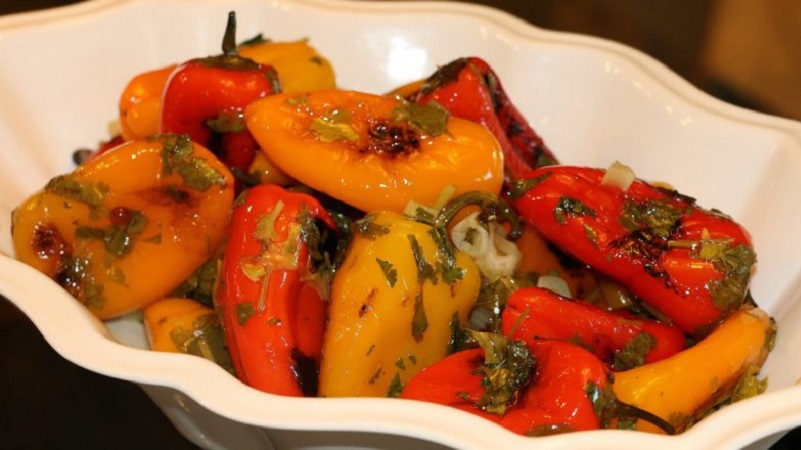
Freeze preparations for salads and main courses
Another way to store bell peppers is to freeze them. This method is convenient in that you can freeze not only chopped vegetables, but also whole fruits.
To freeze whole bell peppers, wash and dry them thoroughly. After that, remove the stalk and core, fold the fruits one into the other, about 5-7 pieces each. Place such blanks in bags or containers and send them to the freezer at the “freezing” temperature regime. Store the frozen items in the storage compartment of the freezer. A vegetable frozen in this form is suitable for preparing vegetable or stuffed meat peppers.
To freeze chopped peppers, you need to cut the prepared product into pieces convenient for you. This can be straws, from which salads and stews are later prepared, or cubes that are suitable for cooking fry and first courses.
Such a blank is stored for 10-12 months.
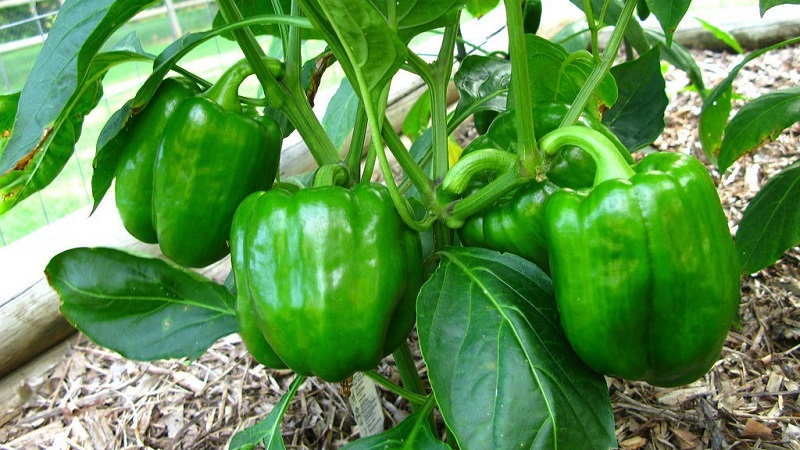
Drying in oil
Drying bell peppers is another way to preserve a vegetable for a long time with the maximum possible amount of nutrients, vitamins and minerals.
For drying, it is necessary to select whole, undamaged fruits, not overripe and without signs of decay. Use thick-walled vegetables for this storage method.
Wash the selected fruits, dry them and cut them into halves; large - into quarters. If you have time, take the time to peel them off for a richer flavor and aroma of bell peppers. To easily peel the skin, immerse the prepared fruits in boiling water for 2 minutes, then transfer them to cold water for the same time. Remove the blanks from the water and remove the skin by gently prying it off with a knife.
Then grease each piece with oil. You can use either sunflower or olive oil, according to your taste. To enhance the taste and aroma, it is recommended to use a mixture of dried herbs, and it will not be superfluous to sprinkle the blanks with salt and black or red ground pepper.
Now start the drying process. How best to do this, choose based on your capabilities. Equally tasty dried peppers are obtained both in a gas oven and in an electric one. An electric dryer is also suitable for this process.
Place the workpiece on a baking sheet or wire rack in an oven at a temperature of 70-80 ° C for 1.5-3 hours. After this time, increase the temperature to 100 ° C and continue drying the workpiece. With this mode, leave the pepper in the oven for another 30-40 minutes. After this, the workpiece should "rest". Take it out for 20-30 minutes and return it to the oven at 100 ° C for 40 minutes for drying.
Attention!It is easy to determine the readiness of the product: the pulp of dried peppers in oil will be one-third less than at the initial stage, and the slices themselves will darken.
Store such a blank in cans of oil. To do this, prepare clean, sterilized jars and lay dried peppers, pieces of garlic and vegetable oil in layers to the very top. Also add rosemary, thyme and basil for flavor and aroma. Place the peppers tightly so that no air remains in the jars. Now the preparation is ready, send it to the refrigerator for storage, and in winter add it to salads or use it as an independent dish.
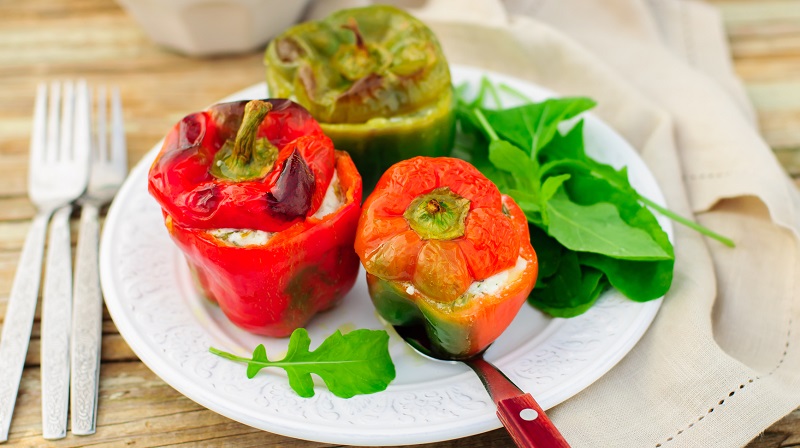
Tips and Secrets
There are a few more tips to help keep the food fresh, tasty and healthy for a long time:
- Do not use unripe peppers for refrigeration. In cold temperatures, it will not ripen and will start to deteriorate.
- Sweet peppers of different degrees of ripeness should not be stored together, this will speed up the ripening process of an unripe product, which will entail its further spoilage.
- Stored in a basement or refrigerator is periodically checked for freshness. If spoiled appears in the general container, remove it immediately.
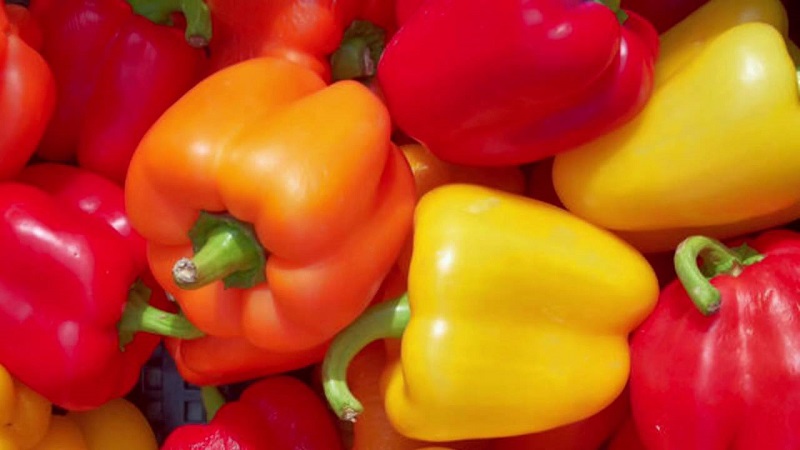
Conclusion
How to store bell peppers in winter? To do this, use freezing, drying, pickling, canning and drying. All methods are good, the main thing is to choose the best one for yourself. With some effort, you will extend your summer for the entire winter period and delight yourself and your loved ones with delicious and healthy dishes.